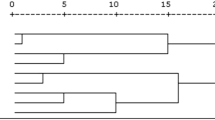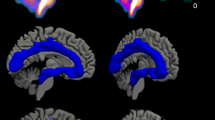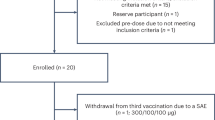Abstract
The psychoneuroimmunology of panic disorder is relatively unexplored. Alterations within brain stress systems that secondarily influence the immune system have been documented. A recent report indicated elevations of serotonin (5-HT) and ganglioside antibodies in patients with primary fibromyalgia, a condition with documented associations with panic disorder. In line with our interest in dysregulated 5-HT systems in panic disorder (PD), we wished to assess if antibodies directed at the 5-HT system were elevated in patients with PD in comparison to healthy volunteers. Sixty-three patients with panic disorder and 26 healthy volunteers were diagnosed by the SCID. Employing ELISA, we measured anti-5-HT and 5-HT anti-idiotypic antibodies (which are directed at 5-HT receptors). To include all subjects in one experiment, three different batches were run during the ELISA. Plasma serotonin anti-idiotypic antibodies: there was a signficiant group effect [patients > controls (p = .007)] and batch effect but no interaction. The mean effect size for the three batches was .76. Following Z-score transformation of each separate batch and then combining all scores, patients demonstrated significantly elevated levels of plasma serotonin anti-idiotypic antibodies. Neither sex nor age as covariates affected the significance of the results. There was a strong correlation between anti-serotonin antibody and serotonin anti-idiotypic antibody measures. Plasma anti-serotonin antibodies: there was a signficiant diagnosis effect [patients > controls (p = .037)]. Mean effect size for the three batches was .52. Upon Z-score transformation, there was a diagnosis effect with antibody elevations in patients. Covaried for sex and age, the result falls below significance to trend levels. The data raise the possibility that psycho-immune dysfunction, specifically related to the 5-HT system, may be present in PD. Potential interruption of 5-HT neurotransmission through autoimmune mechanisms may be of pathophysiologic significance in certain patients with panic disorder. It remains to be demonstrated if the peripheral autoimmunity is representative of CNS 5-HT neuronal alterations. Replication appears warranted.
Similar content being viewed by others
Log in or create a free account to read this content
Gain free access to this article, as well as selected content from this journal and more on nature.com
or
References
Allen AJ, Leonard HL, Swedo SE . (1995): Case study: A new infection-triggered, autoimmune of pediatric OCD and Tourette's syndrome. J Am Acad Child & Adoles Psychiatry 34: (3): 307–311
American Psychiatric Association. (1987): Diagnostic and Statistical Manual of Mental Disorders, Third edition, revised. Washington, DC, American Psychiatric Association.
Andreoli A, Keller SE, Rabaeus M, Zaugg L, Garrone G, Taban C . (1992): Immunity, major depression and panic disorder comorbidity. Biol Psychiatry 31: (9): 896–908
Brambilla F, Bellodi L, Perna G, Battaglia M, Sciuto G, Diaferia G, Petraglia F, Panerai A, Sacerdote P . (1994): Plasma interleukin-1 beta concentrations in panic disorder. Neuropsychobiol 26(1–2):12–22
Coplan JD, Gorman JM, Klein DF . (1992): Serotonin-related function in panic disorder: A critical overview. Neuropsychopharmacology 6: (3): 189–200
Coplan JD, Papp LA, Martinez J, Rosenblum LA, Cooper T, Liebowitz MR, Gorman JM . (1995): Persistence of blunted human growth hormone response to clonidine in panic disorder following fluoxetine treatment. Am J Psychiatry 152: (4): 619–622
Hudson JI, Hudson SH, Pliner LF, Goldenberg DL, Pope HG, Jr . (1985): Fibromyalgia and major affective disorder: A controlled phenomenology and family history study. Am J Psychiatry 142: 441–446
Klein R, Bansch M, Berg PA . (1992): Clinical relevance of antibodies against serotonin and gangliosides in patients with primary fibromyalgia syndrome. Psychoneuroendocrinology 17: (6): 593–598
Maes M, Meltzer HY, Bosmans E, Bergmans R, Vandoolaeghe E, Ranjan R, Desnyder R . (1995): Increased plasma concentrations of interleukin-6, soluble interleukin-6, soluble interleukin-2 and transferrin receptor in major depression. J Affect Disorders 34: (4): 301–309
Marazziti D, Ambrogi F, Vanacore R, Mignani V, Savino M, Palego L, Cassano GB, Akiskal HS . (1992): Immune cell imbalance in major depressive and panic disorders. Neuropsychobiology 26: (1–2): 23–26
Ramesh C, Yeragani VK, Balon R, Pohl R . (1991): A comparative study of immune status in panic disorder patients and controls. Acta Psychiatrica Scandinavica 84 (4): 396–397
Schmidt-Traub S . (1995): The psychoimmunological network of panic disorders, agoraphobia and allergic reactions (German). Therapeutische Umschau (2):123–128
Spitzer RL, Williams JBW, Gibon M, First M . (1990): SCID: User's Guide for the Structured Clinical Interview for DSM-III-R. Washington DC, American Psychiatric Press.
Tamir H, Liu K, Hsiung S, Yu P, Kirchgessner AL, Gershon MD . (1991): Identification of serotonin receptors recognized by anti-idiotypic antibodies. J Neurochem 57: 930–942
Wade PR, Tamir H, Kirchgessner AL, Gershon MD . (1994): Analysis of the role of serotonin in the enteric nervous system using anti-idiotypic antibodies to serotonin receptors. Am J Physiol 266 (Gastrointest Liver Physiol 29): G403–G416
Wasserman NH, Penn AS, Freimuth PI, Treptow N, Wentzel S, Cleveland WL, Erlanger BF . (1982): Anti-idiotypic route to anti-acetylcholine receptor antibodies and myasthenia gravis. Proc Natl Acad Sci USA 79: 4810–4814
Waylonis GW, Heck W . (1992): Fibromyalgia syndrome: New associations. Am J Phys Med Rehabil 71: 343–348
Acknowledgements
Supported in part by NIMH-CRC 30906, NIMH Research Scientist Award NH-00416 (to Dr Gorman), NIMH Research Scientist Development Award MH-00858 (to Dr Papp), and Clinical training grant MH-18641 and NIMH Research Scientist Development Award MH-01039 (to Dr. Coplan).
Author information
Authors and Affiliations
Rights and permissions
About this article
Cite this article
Coplan, J., Tamir, H., Calaprice, D. et al. Plasma Anti-Serotonin and Serotonin Anti-Idiotypic Antibodies Are Elevated in Panic Disorder. Neuropsychopharmacol 20, 386–391 (1999). https://doi.org/10.1016/S0893-133X(98)00130-4
Received:
Revised:
Accepted:
Issue date:
DOI: https://doi.org/10.1016/S0893-133X(98)00130-4
Keywords
This article is cited by
-
Effects of the immunoglobulin/histamine complex on panic disorder concurrent with chronic spontaneous urticaria: a case report
Journal of Medical Case Reports (2023)
-
In vivo Monitoring of Serotonin by Nanomaterial Functionalized Acupuncture Needle
Scientific Reports (2016)
-
Differential responses to anxiogenic drugs in a mouse model of panic disorder as revealed by Fos immunocytochemistry in specific areas of the fear circuitry
Amino Acids (2007)
-
The Management of Anxiety and Depressive Disorders: A Review
International Journal of Mental Health and Addiction (2006)
-
Entstehung und Verlauf der Panikstörung
Psychotherapeut (2005)



